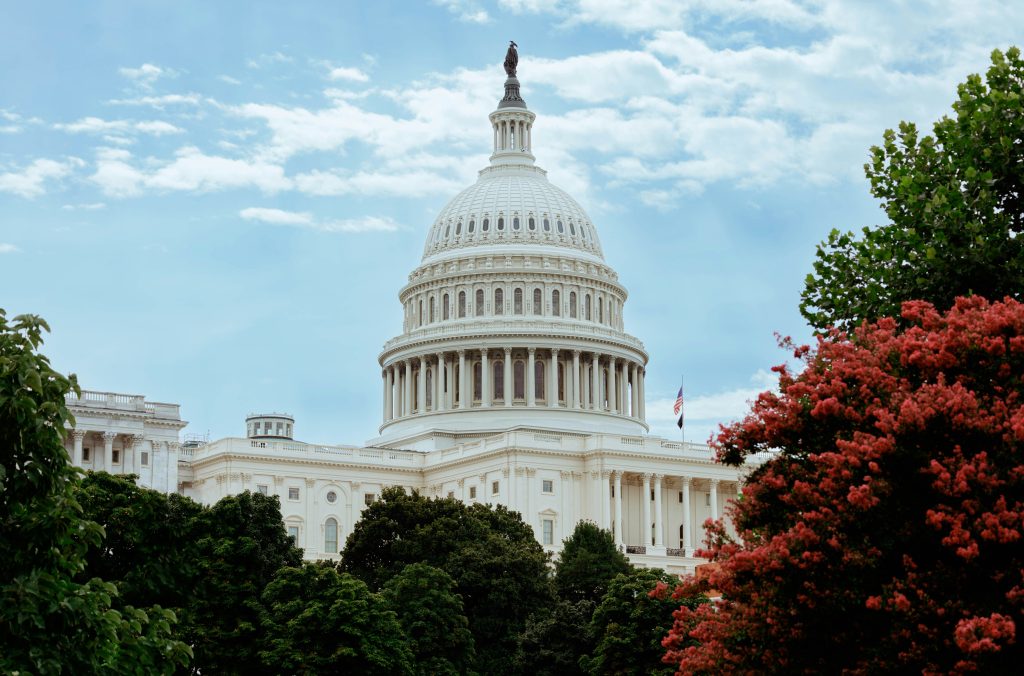December CPI Data: Inflation Ticks Up, Adding Pressure on the Fed
The latest Consumer Price Index (CPI) report for December has revealed an increase in inflation, surpassing economists’ expectations. While varying figures are reported, multiple outlets note a rise to 2.9% annual inflation, the highest since July. This uptick was fueled primarily by rising energy and food costs. However, there’s some debate around core inflation, with some reports suggesting a cooling or easing trend in underlying price measures. The higher-than-expected inflation makes it less likely that the Federal Reserve will cut interest rates in the near term. The market, already navigating mixed signals, is expected to react with heightened volatility as investors digest the contradictory signs. The report places extra pressure on the Federal Reserve to balance economic growth with the mandate to control inflation.
Tags: Consumer Price Index, CPI, CPI report, Economy, Federal Reserve, Inflation, Interest Rates, Stock market
Federal Reserve Signals Approaching Rate Cuts Amid Inflation Decline
As the economic landscape gradually shifts in the aftermath of the COVID-19 pandemic, the Federal Reserve is signaling a pivotal moment in its monetary policy approach. In recent statements, Federal Reserve Chairman Jerome Powell expressed growing confidence that inflation is nearing a manageable level, suggesting that the worst economic distortions stemming from the pandemic are fading away.
At a conference held in Jackson Hole, Wyoming, Powell’s remarks reflected a notably dovish tone, indicating that the central bank is preparing to make significant adjustments to its interest rate strategy. After a prolonged period of elevated inflation rates, which have strained household budgets and influenced economic growth, the Fed appears poised to transition from a tightening phase to one that may include rate cuts.
Powell highlighted that the timing and pace of any proposed rate reductions will be closely tied to upcoming economic data, emphasizing the Fed’s commitment to data-driven decision-making. The recent decline in inflation rates, coupled with a cooling job market, has provided the Fed with a more favorable environment to reconsider its policy levers.
The central bank’s annual retreat serves as a critical platform for discussing monetary policy and the economic outlook, and Powell’s keynote address has attracted significant attention from economists and market analysts alike. Investors are keenly watching for signals regarding how and when the Fed may begin to cut interest rates, which have remained at a 23-year high.
As inflation continues to recede, the Federal Reserve’s approach could pave the way for a more accommodative monetary environment, potentially stimulating economic growth. This shift is particularly relevant as businesses and consumers alike navigate the post-pandemic recovery and the associated challenges.
The implications of Powell’s statements are profound, not only for the financial markets but also for American households who may soon experience relief from the burdens of high interest rates. The prospect of rate cuts could have a ripple effect across various sectors, from housing to consumer spending, influencing economic activity in the months ahead.
In conclusion, as the Federal Reserve approaches a possible inflection point in its monetary policy, the focus on inflation and employment data will be paramount. The central bank’s ability to respond effectively to changing economic conditions will be crucial in fostering a stable and prosperous economic environment. Investors, businesses, and consumers alike are awaiting the next steps from the Fed, hopeful for a return to more favorable financial conditions as the shadows of the pandemic continue to recede.
Tags: Economic Policy, Federal Reserve, Inflation, Interest Rates, Jerome Powell
Federal Reserve Chair Signals Potential Rate Cuts Amid Easing Inflation Concerns
In a significant address at the annual economic symposium in Jackson Hole, Wyoming, Federal Reserve Chair Jerome Powell conveyed a sense of optimism regarding the trajectory of inflation and its implications for monetary policy. Powell’s remarks, characterized by a notably dovish tone, suggest that the Federal Reserve is preparing to implement interest rate cuts in the near future, contingent upon favorable economic data.
During his keynote speech, Powell highlighted the ongoing efforts of the Federal Reserve to combat inflation over the past two years and expressed confidence that these efforts are beginning to yield positive results. With inflation showing signs of cooling, Powell indicated that the central bank is closely monitoring economic indicators that could influence the timing and pace of potential rate cuts. “The job market is a critical area of focus for us,” Powell stated, emphasizing that any further cooling in employment numbers would be unwelcome.
The anticipation of rate cuts marks a significant shift in the Federal Reserve’s monetary policy stance, which has been predominantly hawkish in response to persistent inflationary pressures. Powell’s acknowledgment of the possibility of lowering interest rates as early as September illustrates a cautious yet proactive approach to managing the economy. As the Fed navigates these complex economic waters, the chair’s upcoming decisions will be shaped by the latest data on inflation, employment, and overall economic performance.
This potential shift in policy comes at a time when many economists and market analysts are keenly assessing the implications of a changing interest rate environment. The prospect of lower rates is generally seen as a boost to consumer spending and investment, potentially stimulating economic growth. However, the Fed’s cautious optimism is tempered by the recognition that inflation remains a formidable challenge, and any missteps in policy could have far-reaching consequences.
In conclusion, Powell’s remarks at Jackson Hole signify a pivotal moment for the Federal Reserve as it contemplates its next moves in the ongoing battle against inflation. The central bank’s ability to navigate this transition effectively will be crucial in sustaining economic stability and growth in the months ahead.
Tags: Federal Reserve, Inflation, Interest Rates, Jerome Powell
CPI Report Signals Positive Trend in Inflation Control
In a significant turn of events, the latest Consumer Price Index (CPI) report for July 2024 has emerged, highlighting a notable moderation in inflationary pressures across the economy. With a modest increase of 0.2% for the month, the annual CPI has settled at 2.9%, marking its lowest growth rate in over three years. This development is poised to bolster the Federal Reserve’s confidence in achieving its inflation target of 2%, paving the way for potential interest rate cuts in the near future.
The encouraging figures suggest that the aggressive measures taken by the Federal Reserve over the past year have begun to yield results. Analysts at JP Morgan have indicated that the current CPI data aligns with expectations and supports the narrative that inflation, which once surged to unprecedented levels, is now on a clear downward trajectory. As prices stabilize, the Federal Reserve may find itself in a position to recalibrate its monetary policy, providing relief to consumers and businesses alike.
The White House has echoed these sentiments, emphasizing that the CPI’s performance comes as a relief amidst a fluctuating economic landscape. In recent months, the rapid price hikes that plagued consumers appear to have slowed considerably, indicating that the battle against inflation is nearing a favorable conclusion.
For the first time in recent history, the CPI has dipped below the 3% threshold, a milestone that could signify a turning point for economic policy. Experts assert that this deceleration in price hikes may lead to a renewed focus on stimulating economic growth, as the Federal Reserve assesses the broader implications of the current inflationary environment.
However, not all categories of consumer spending have experienced this reprieve. Housing costs remain a stubbornly high contributor to inflation, reflecting ongoing challenges in the real estate market. Analysts have noted that while overall inflation may be stabilizing, the persistence of elevated housing prices could complicate the Fed’s efforts to achieve its broader economic objectives.
In summary, the July 2024 CPI report paints a promising picture for the economy, suggesting that inflationary pressures are on the decline and the Federal Reserve may soon pivot towards a more accommodative monetary stance. As consumers begin to feel the effects of these changes, the focus now shifts to how policymakers will address the lingering challenges while fostering a sustainable economic recovery.
Tags: CPI, CPI report, Federal Reserve, Inflation, Interest Rates
July CPI Report Signals Easing Inflation and Potential Interest Rate Cuts
In a significant development for the U.S. economy, the Consumer Price Index (CPI) for July 2024 has reported a modest increase of 0.2%, aligning perfectly with economists’ expectations. This marks a pivotal moment as the yearly CPI growth rate has dipped to 2.9%, the lowest level observed in over three years. Such data appears to bolster the Federal Reserve’s confidence in its ongoing battle against inflation, suggesting a promising trajectory towards achieving the long-term target of 2%.
The latest CPI report indicates a slowdown in price hikes, with many analysts asserting that the most intense phase of inflation seems to be behind us. This is a welcome shift for consumers and businesses alike, as the relentless rise in prices that characterized the previous years gives way to a more stable economic environment.
Despite the overall encouraging data, experts point out that rising shelter costs continue to exert pressure on the CPI. However, they argue that current market dynamics may not reflect an ongoing upward trend in housing prices. This divergence has led to a nuanced interpretation of the data, where the CPI figures suggest a broader cooling of inflationary pressures, yet certain sectors remain in flux.
As the Federal Reserve contemplates potential interest rate adjustments, the July CPI report serves as a crucial indicator. Analysts believe that if inflation trends continue downward, the Fed may consider implementing cuts to interest rates in the near future. Such a move would not only provide relief to borrowers but could also stimulate economic growth by encouraging spending and investment.
In summary, the July CPI report paints a picture of an economy that is gradually stabilizing, with inflationary pressures easing. This shift could pave the way for a more favorable monetary policy landscape, benefitting consumers and businesses alike. The outlook is cautiously optimistic as stakeholders await further developments in the economic landscape, remaining vigilant for signs of sustained price stability.
As we move forward, the implications of this report will be closely monitored by investors, policymakers, and consumers, all of whom have a vested interest in the trajectory of inflation and interest rates.
Tags: CPI, Federal Reserve, Inflation, Interest Rates
2025 Social Security COLA Increase Projected to be Lowest in Recent Years Amidst Declining Inflation
As the countdown to 2025 begins, Social Security recipients are bracing for what is likely to be one of the smallest cost-of-living adjustments (COLA) in recent memory. Recent government data indicates that inflation is on a downward trend, prompting analysts to project a modest 2.6% increase for Social Security benefits next year. This figure represents the lowest adjustment since 2021, raising concerns among seniors who continue to grapple with rising living costs despite the easing inflation rates. For context, the COLA for 2024 was set at 3.2%, which resulted in an average monthly benefit increase of over $50 for recipients. However, this anticipated adjustment for 2025 falls short of that figure, leaving many to wonder how they will manage their expenses in the face of ongoing financial pressures. The Senior Citizens League, an advocacy group focused on the needs of older Americans, has also weighed in on the situation, forecasting that the projected COLA adjustment may not adequately reflect the real cost of living for seniors. In particular, they highlight that while inflation may be subsiding, the everyday expenses that seniors face – including healthcare, housing, and food – continue to rise. Analysts who specialize in tracking the Consumer Price Index (CPI) suggest that the current economic landscape may lead to lower COLA adjustments in the future, a trend that is concerning for many retirees. The implications of a reduced COLA adjustment extend beyond mere numbers; they resonate deeply with the financial realities of millions of Americans who depend on Social Security for their livelihoods. As the government prepares to finalize the COLA figures later this year, the conversation surrounding the adequacy of these adjustments is more critical than ever. With the aging population and the increasing number of individuals relying on Social Security benefits, ensuring that these adjustments keep pace with the actual cost of living is paramount. While the anticipated increase may provide some relief, it remains to be seen whether it will be sufficient to address the financial challenges faced by many seniors. As 2025 approaches, the focus will undoubtedly shift to how policymakers can better support this vulnerable demographic and ensure that their financial needs are met in an ever-changing economic landscape.
Tags: 2025 Social Security COLA increase, COLA, Economic Adjustment, Inflation, Seniors, Social Security
Consumer Price Index Shows Signs of Easing as Inflation Rates Drop Below 3%
In a significant development for the economy, the Consumer Price Index (CPI) report for July has demonstrated a noticeable slowdown in inflation, with the index rising by only 0.2% for the month. This figure aligns precisely with analysts’ expectations, marking a pivotal moment as the annual inflation rate now stands at 2.9%, the lowest it has been in over three years. This decline is particularly noteworthy as it highlights a departure from the rapid price increases that have characterized the post-pandemic recovery. The latest data from the Labor Department indicates that prices have moderated, providing a glimmer of hope for consumers who have been grappling with elevated costs across various sectors.
Analysts had anticipated a slight uptick of 0.2% for the month of July, but the results have exceeded expectations regarding the yearly growth rate, which has now dipped below the critical 3% threshold. This marks a significant achievement, as it is the first time in more than three years that the CPI has landed under this level, suggesting that the Federal Reserve’s aggressive monetary policy may be taking effect.
The implications of this CPI report are manifold. For consumers, this means potential relief from the mounting pressures of inflation, as the cost of living begins to stabilize. The Federal Reserve, which has been closely monitoring inflation trends to inform its interest rate decisions, may see this report as a signal to recalibrate its approach. With inflation rates easing, there is speculation about the possibility of interest rate cuts in the near future, which could further stimulate economic activity.
Moreover, the data reflects a broader trend in which price hikes have slowed across various categories. While essential goods and services still experience fluctuations, the general trajectory indicates a cooling off, allowing consumers to breathe a sigh of relief. This shift could foster a more positive economic environment, encouraging spending and investment, critical components for sustained growth.
As policymakers analyze the report, the focus will undoubtedly be on ensuring that the progress made is not temporary. The Federal Reserve will likely continue to weigh its options carefully, balancing the need for economic growth with the necessity of maintaining price stability. As the economic landscape shifts, stakeholders from all sectors will be paying close attention to upcoming reports and Federal Reserve announcements to gauge the long-term trajectory of inflation and its impact on the broader economy.
In conclusion, the July CPI report serves as a crucial indicator of economic health, suggesting that inflationary pressures may be easing. While challenges remain, the trend towards lower inflation rates could signal a turning point for consumers and the economy at large, fostering an environment conducive to growth and stability.
Tags: CPI, CPI report, economic growth, Federal Reserve, Inflation





